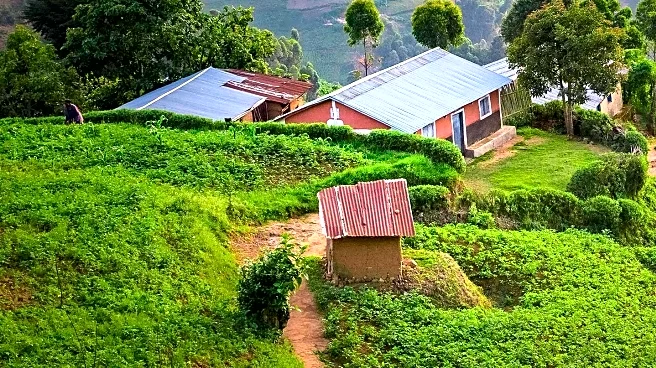What's Happening?
In Jagersfontein, South Africa, residents are expressing concerns over the structural integrity of newly built houses following the 2022 mine disaster. The disaster, which resulted in a mudslide, left five people dead, over 300 injured, and thousands of homes destroyed. The mining company responsible committed R150 million for victim compensation, but many residents remain dissatisfied with the current state of their new homes. Issues such as poor construction materials, inadequate electricity connections, and incomplete construction work have been reported. Residents fear that these houses, which are already showing signs of structural weakness, may collapse, posing a significant safety risk.
Why It's Important?
The situation in Jagersfontein highlights the ongoing challenges faced by communities affected by industrial disasters. The inadequate response and poor quality of reconstruction efforts underscore the need for better oversight and accountability in post-disaster recovery processes. The residents' plight reflects broader issues of infrastructure and safety standards in South Africa, which could have implications for public policy and regulatory frameworks. The failure to adequately address these concerns may lead to further social unrest and erode trust in governmental and corporate entities responsible for disaster management and recovery.
What's Next?
Residents are calling for immediate action to address the structural issues of their homes. The lack of response from government officials and the mining company has left many feeling neglected and vulnerable. Legal actions are underway, with five employees of an engineering company charged in connection with the dam collapse. The outcome of these legal proceedings could influence future regulatory measures and compensation frameworks for affected communities. Continued advocacy and media attention may pressure authorities to prioritize the safety and well-being of Jagersfontein residents.
Beyond the Headlines
The Jagersfontein case raises ethical questions about corporate responsibility and the adequacy of compensation for disaster victims. It also highlights the socio-economic disparities that often leave marginalized communities bearing the brunt of industrial failures. Long-term, this situation could prompt a reevaluation of how mining operations are regulated and how communities are safeguarded against environmental and structural risks.










